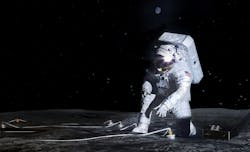WASHINGTON - The National Aeronautics and Space Administration (NASA) has unveiled the inaugural lunar instruments set for deployment during the Artemis mission, aimed at fulfilling key scientific objectives. These instruments will focus on three core aspects: understanding planetary processes, unraveling the origins of lunar polar volatiles, and addressing exploration risks. Selected for their unique installation requirements necessitating human deployment during moonwalks, these payloads are slated for further development to feature on Artemis III, scheduled for a 2026 liftoff. However, final decisions regarding mission manifesting remain pending.
Scientists leading the respective payload teams will integrate into NASA's Artemis III science team. Among the instruments is the Lunar Environment Monitoring Station (LEMS), a compact seismometer suite engineered to continuously monitor seismic activity, particularly ground motion from moonquakes, in the lunar south polar region. The LEMS project, spearheaded by Dr. Mehdi Benna from the University of Maryland, Baltimore County, previously secured four years of NASA funding for engineering development.
Another instrument, Lunar Effects on Agricultural Flora (LEAF), will explore the impact of lunar surface conditions on space crops, focusing on plant photosynthesis, growth, and systemic stress responses. Led by Christine Escobar of Space Lab Technologies, LLC, LEAF aims to shed light on plant utilization for human nutrition and life support beyond Earth.
Related: New NASA Artemis instruments to study volcanic terrain on the Moon
The Lunar Dielectric Analyzer (LDA), an internationally contributed payload, will assess the regolith's ability to conduct electric fields, crucial for identifying lunar volatiles like ice. Dr. Hideaki Miyamoto of the University of Tokyo leads this endeavor, supported by the Japan Aerospace Exploration Agency (JAXA).
Joel Kearns, deputy associate administrator for exploration in NASA's Science Mission Directorate, emphasized the significance of these instruments, heralding them as a milestone akin to Apollo-era science exploration. These payloads, Kearns noted, represent the initial strides toward realizing high-priority scientific goals outlined in the Artemis III Science Definition Team report.

